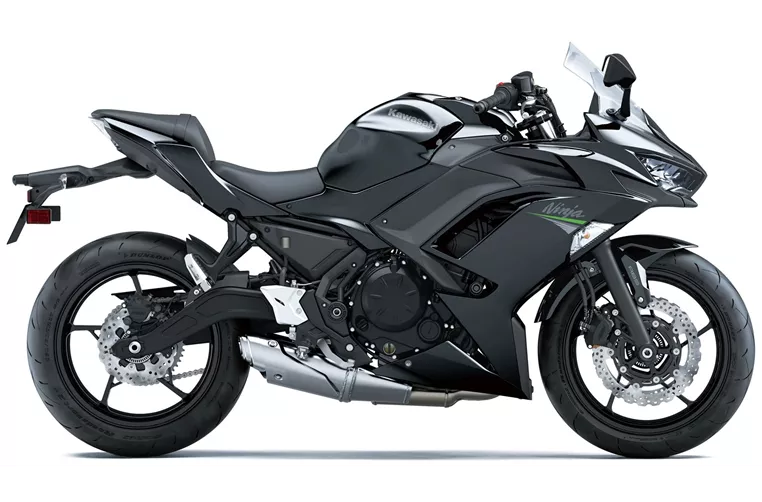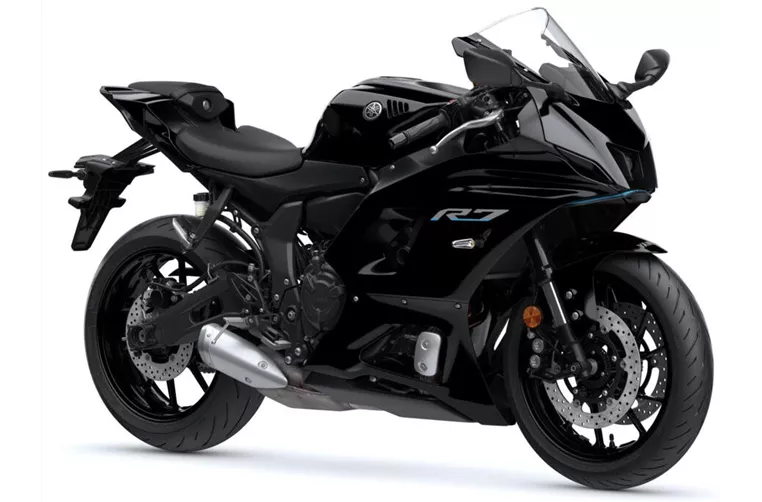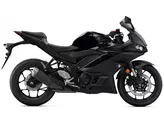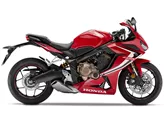Kawasaki Ninja 650 2020 vs. Yamaha R7 2021
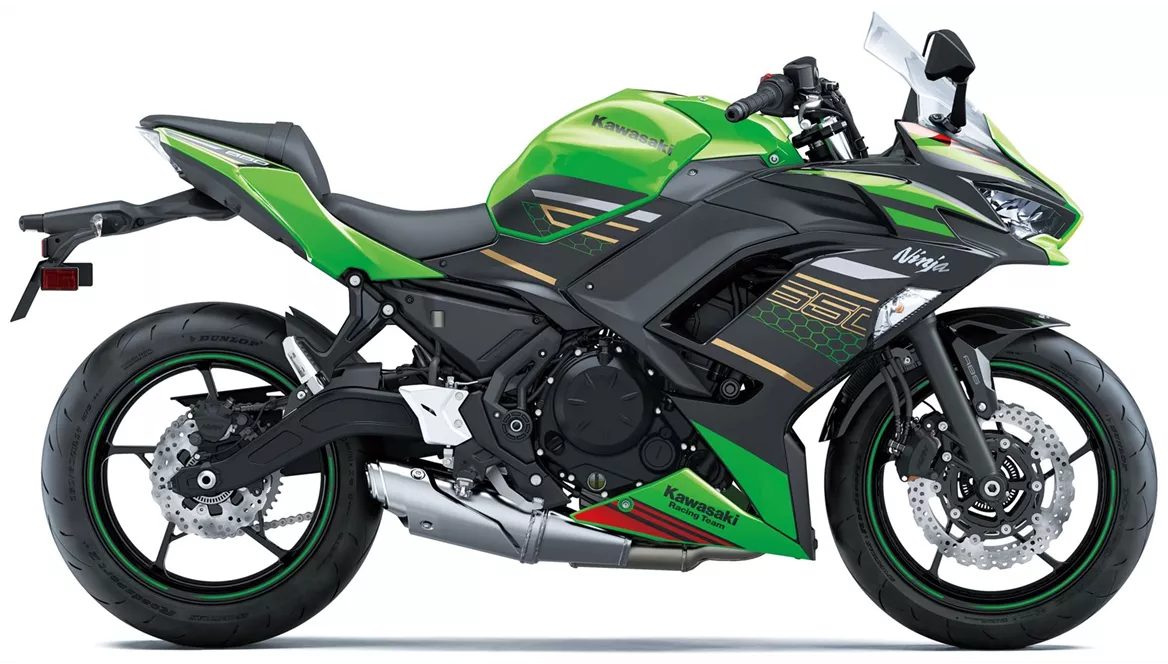
Kawasaki Ninja 650 2020
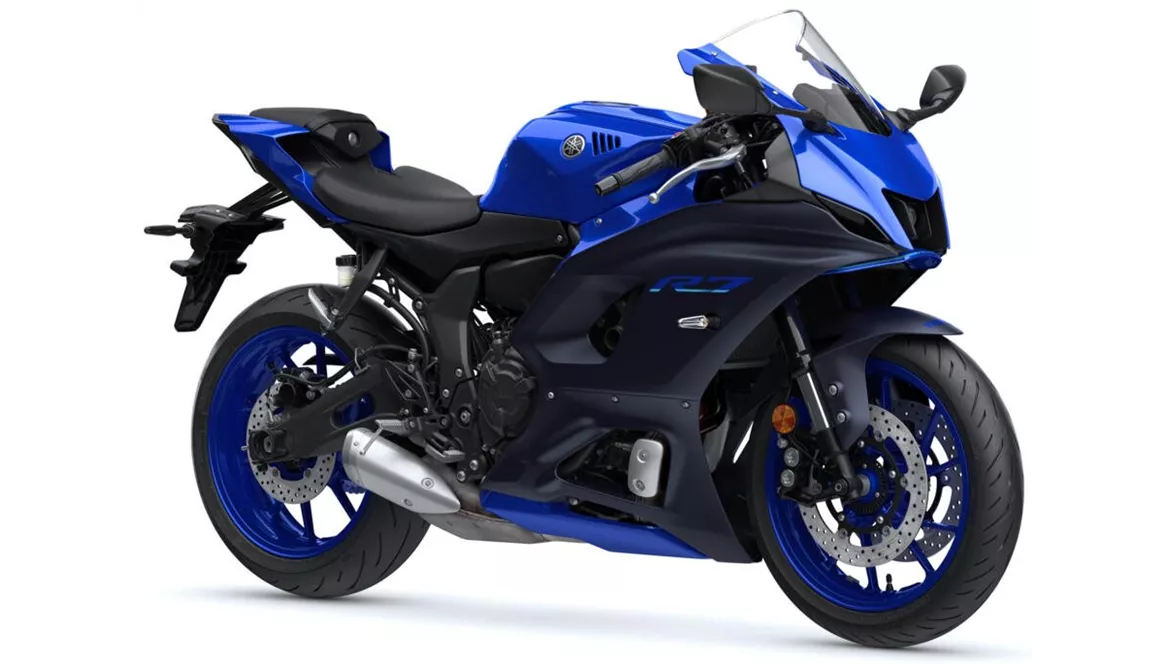
Yamaha R7 2021
Visão geral - Kawasaki Ninja 650 2020 vs Yamaha R7 2021
The Kawasaki Ninja 650 2020 and the Yamaha R7 2021 are both supersport motorcycles that offer powerful performance and advanced features.
Starting with the technical specifications, both bikes have an inline engine configuration with two cylinders. The Kawasaki Ninja 650 has a displacement of 649cc, while the Yamaha R7 has a slightly larger displacement of 689cc. In terms of power, the Yamaha R7 has a slight advantage with 73.4 HP compared to the Ninja 650's 68.2 HP. The torque is also higher in the Yamaha R7 with 67 Nm compared to the Ninja 650's 65.7 Nm.
Both bikes have a DOHC valve system with four valves per cylinder, providing efficient fuel combustion and optimal performance. They also feature a steel frame chassis, ensuring stability and durability on the road. The rake angle, which determines the steering stability, is 65.5 degrees for the Ninja 650 and 66.3 degrees for the R7.
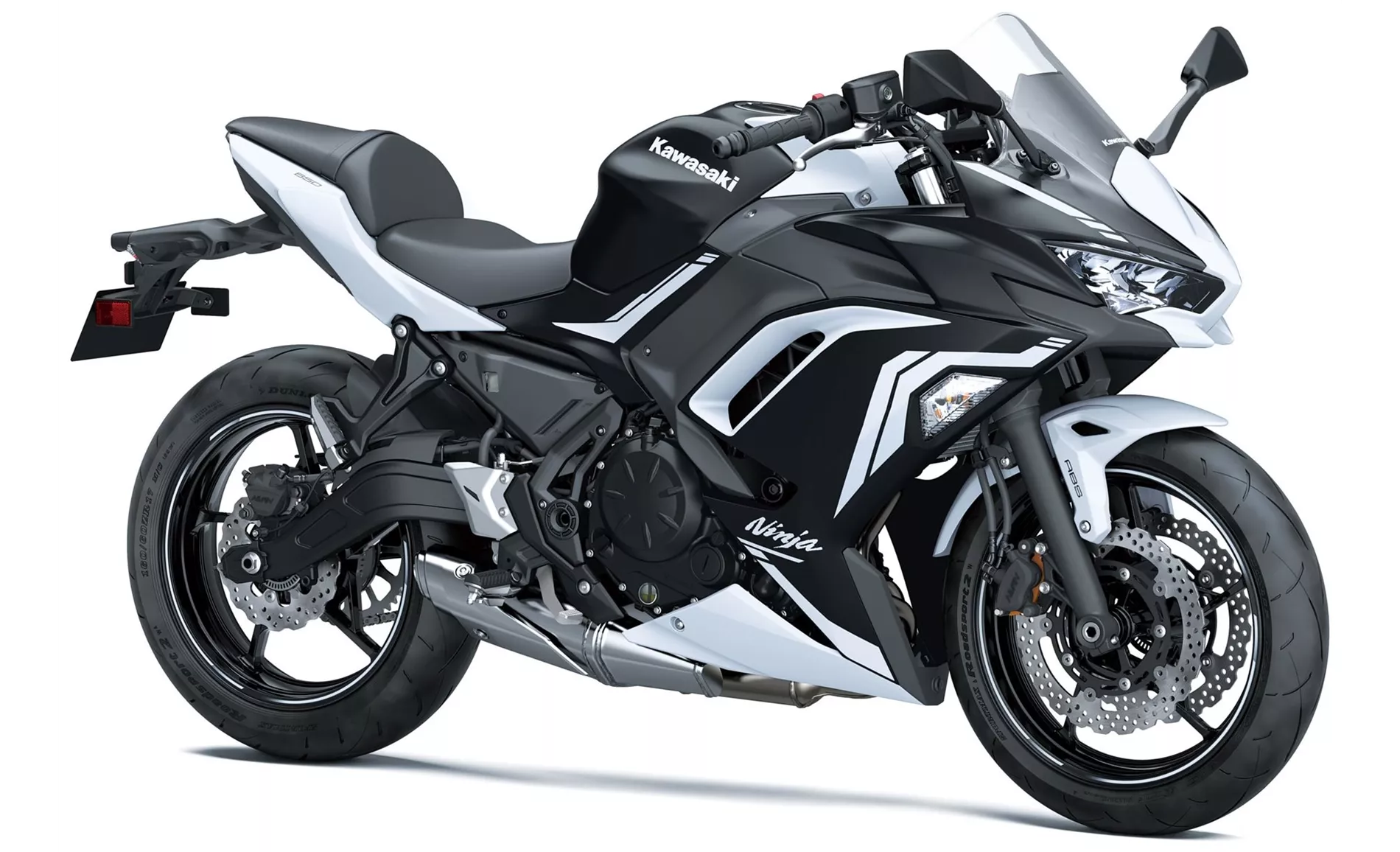
Kawasaki Ninja 650 2020
In terms of suspension, both bikes have a telescopic front fork and a monoshock rear suspension. The Yamaha R7 has a slight advantage with a larger front tire width of 120mm compared to the Ninja 650's 120mm. The rear tire width is also wider in the R7 with 180mm compared to the Ninja 650's 160mm.
Both bikes are equipped with dual disc brakes at the front, providing excellent stopping power. The Ninja 650 uses petaled discs, while the R7 uses radial discs. Both bikes also have ABS for advanced rider assistance and safety.
In terms of dimensions, the Ninja 650 has a longer wheelbase of 1410mm compared to the R7's 1395mm. The weight of the Ninja 650 is slightly higher at 193kg compared to the R7's 188kg. Both bikes have a fuel tank capacity of 15 liters for the Ninja 650 and 13 liters for the R7.
In terms of equipment, both bikes feature LED headlights for improved visibility. The Ninja 650 also has LED daytime running lights and a TFT screen with connectivity, providing a modern and sporty look. The R7, on the other hand, focuses more on track performance with its CP2 high-torque engine and sporty riding position.
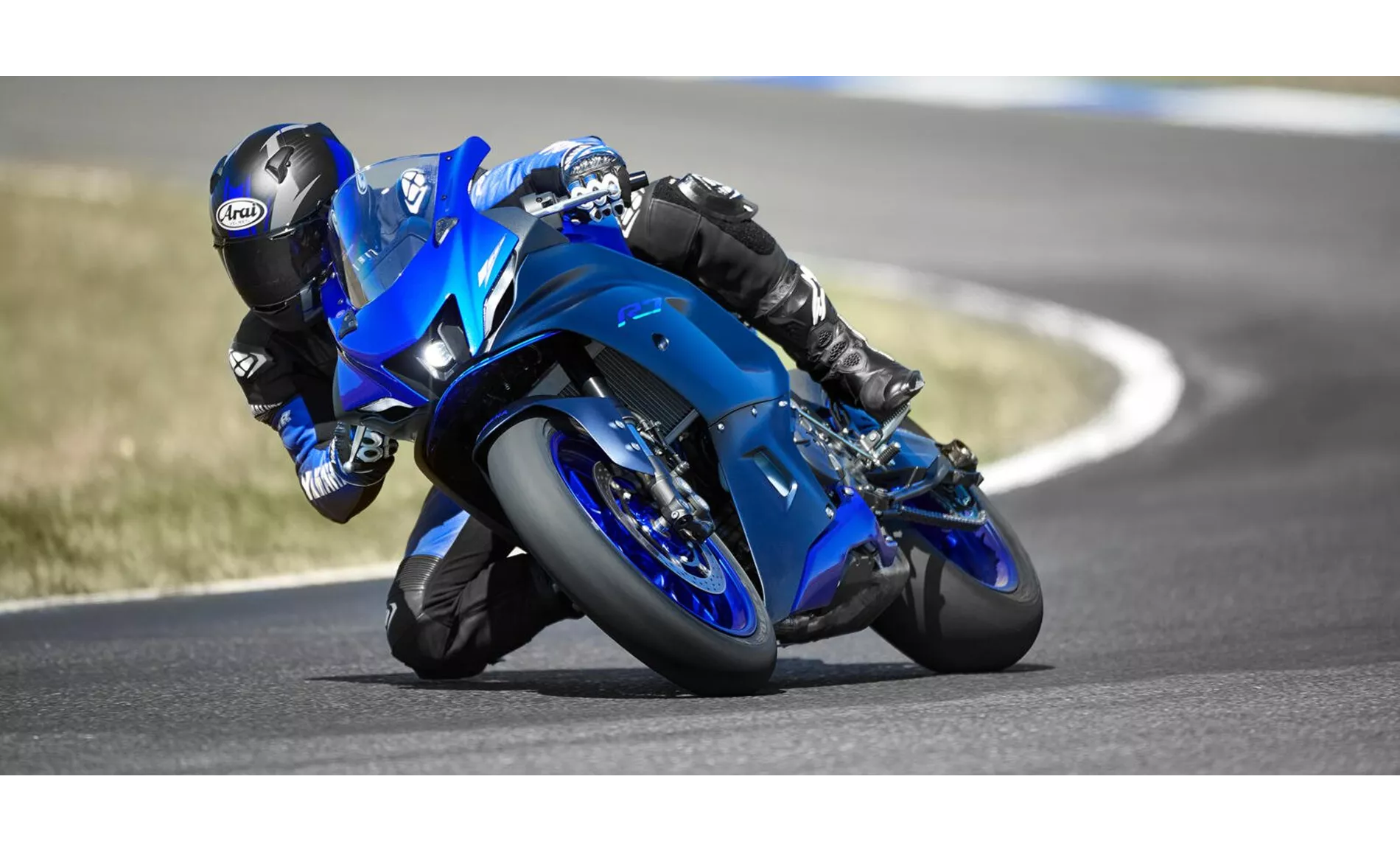
Yamaha R7 2021
In terms of strengths, the Ninja 650 offers a comfortable seat suitable for long rides, compact dimensions, and a stable chassis. It also has a sporty appearance and the convenience of a TFT screen with connectivity. On the other hand, the R7 boasts a powerful CP2 engine, a sporty riding position, and a suspension setup that is ideal for track days.
As for weaknesses, the Ninja 650 may not be suitable for taller riders due to its overall delicate design. It also has a point of pressure on the front brake and limited suitability for two-person trips. The R7, on the other hand, could benefit from having a quick shifter as a standard feature.
Overall, both the Kawasaki Ninja 650 2020 and the Yamaha R7 2021 are impressive supersport motorcycles with their own unique strengths and weaknesses. Riders looking for a comfortable and versatile option may prefer the Ninja 650, while those seeking a more track-focused experience may lean towards the R7.
Especificações técnicas Kawasaki Ninja 650 2020 em comparação com Yamaha R7 2021
Prós e contras em comparação
Prós e contras em comparação
Kawasaki Ninja 650 2020
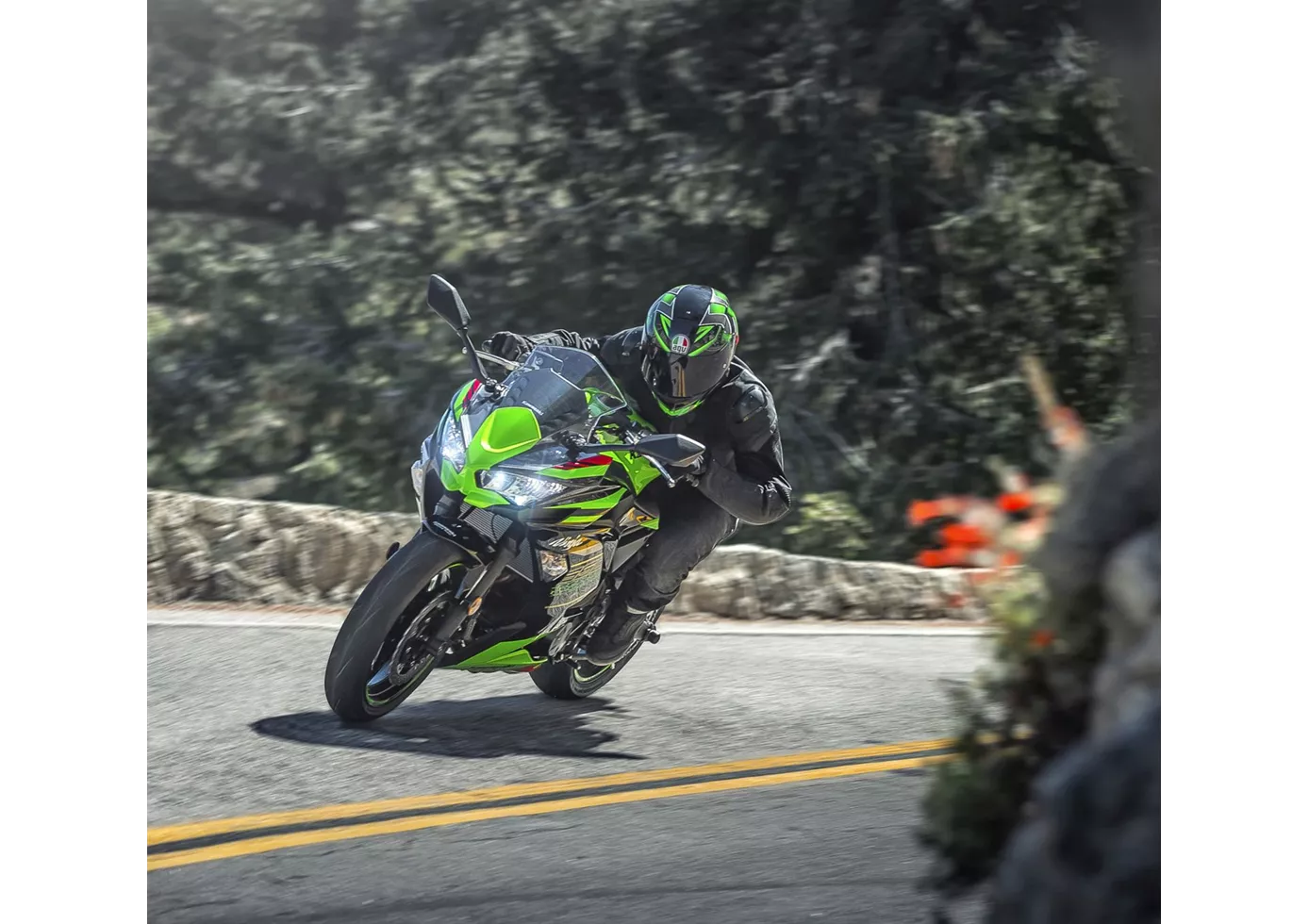
Salve a sport tourer! Com a Ninja 650, a Kawasaki criou uma representante exemplar desta classe e (espera-se) resolveu o problema da nova geração. O chassis estável e os dois cilindros decentes farão as delícias dos principiantes e dos pilotos avançados, mesmo a um ritmo mais acelerado. O travão dianteiro é um pouco bem intencionado demais, faltando-lhe um ponto de pressão transparente, apesar do bom desempenho de travagem. Outra vantagem é o ecrã TFT, que não encontramos na concorrência neste momento, bem como o aspeto adulto, que está fortemente orientado para os modelos Ninja maiores.
Yamaha R7 2021
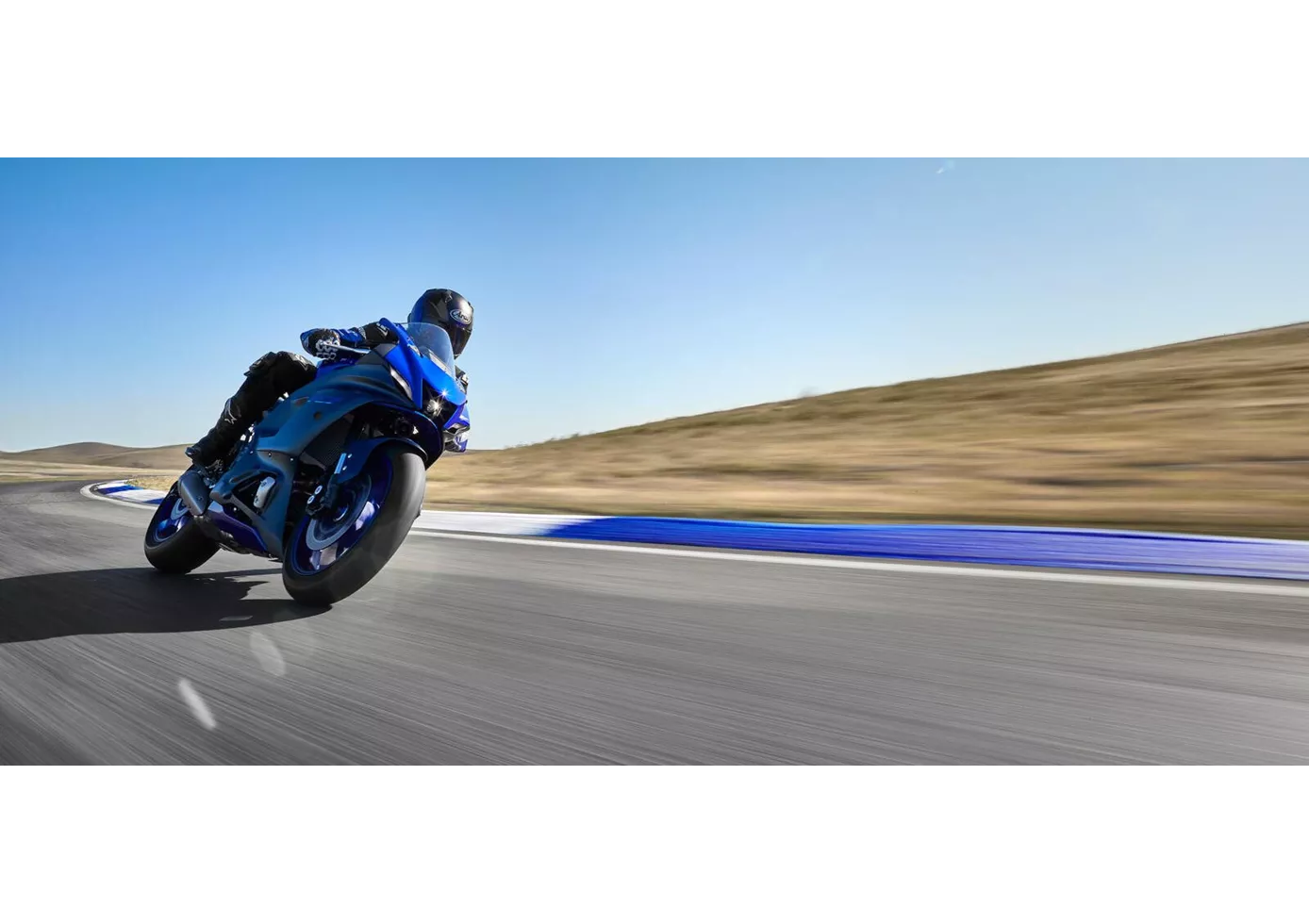
Apesar da combinação bastante idiossincrática da sensata unidade de potência de gama média de 73,4 cv e do visual extremamente agressivo e desportivo, a R7 não é de forma alguma uma ovelha em pele de lobo. O desempenho, que se situa algures entre a R3 e a R6, revelou-se muito mais forte na prática do que os valores puros no papel poderiam sugerir e, em termos de geometria, chassis, travões e pneus, os engenheiros da Yamaha fizeram realmente o seu trabalho de casa. Para além disso, a Yamaha R7 tem todas as qualidades para se divertir imenso numa pista de corrida compacta como Pannoniaring, por exemplo, mesmo sem um grande investimento. Mas é claro que ela se sente melhor na estrada rural, e é aí que ela pertence em primeiro lugar, em nossa opinião. Tendo em conta o pacote global, o preço de compra é mais do que justo - por isso não é um problema o facto de a alavanca de velocidades não estar incluída e ter de ser adquirida como opção.
Comparação de preços Preço médio de mercado Kawasaki Ninja 650 vs Yamaha R7
There are a few key differences between a Kawasaki Ninja 650 2020 and a Yamaha R7 2021. There are the same number of bikes of both models available on the 1000PS.de marketplace, specifically 10. It takes less time to sell a Kawasaki Ninja 650 with 75 days compared to 161 days for a Yamaha R7. Since model year 2017 1000PS.de editors have written 20 reviews for the Kawasaki Ninja 650 and 9 reviews for the Yamaha R7 since model year 2021. The first review for the Kawasaki Ninja 650 was published on 04/10/2016 and now has more than 79 600 views. This compares to more than 92 800 views for the first review on Yamaha R7 published on 18/05/2021.
